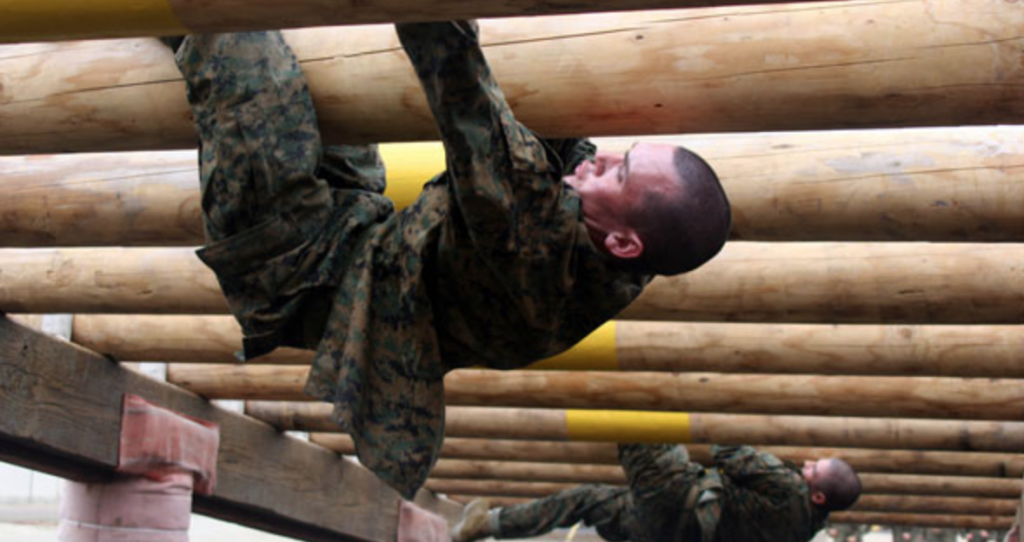Boot camp obstacle courses are designed to be physically, emotionally and psychological challenging. Soldiers build confidence as they meet and overcome physical limitations, they learn how to move their bodies in ways that can keep them safe in combat, and they develop perseverance. These are also important skills that we can benefit from having if we ever find ourselves in challenging survival situations. Let’s take a closer look at a few common types of obstacles and how learning to move through them can help us to be better-prepared during a crisis.
Obstacles for Crawling
These are designed to condition soldiers to be able to move quickly through areas in which they need to lie low. This could be because they need sneak up on a target or perhaps they’re under fire and risk getting shot if they don’t keep their profile as close to the ground as possible. Each obstacle presents certain challenges that need to be overcome, and the goal is to get through them as quickly as possible. Three of the most-common crawling obstacles are the tunnel, the low rail and the wire.
Obstacles for Climbing
Almost anyone can climb up a sturdy object that has good hand and toe holds with relative ease. However, there are plenty of obstacles that we may need to climb over in a survival situation that may not be as user-friendly. Some of the most common include cargo netting, wooden fences or walls, poles and ropes. Each involves using a different technique, different muscle groups and moving the body in different ways in order to move as efficiently and quickly as possible.
Horizontal
There are many times when it’s better to go over obstacles instead of through them. Gullies, debris fields, flooded areas or creeks and streams are just a few common examples. To develop this skill, soldiers are taught how to grab onto horizontal ladders, beams or ropes and walk to the other end with their hands. What is surprising to many people is that they don’t need a lot of upper body strength to dangle themselves to safety. Doing it efficiently involves a combination of inertia, shifting body weight and hanging on for dear life while progressing forward to get to the other side.
Balancing
We all know how difficult it can be to walk on a log or balance beam at first. Now imagine having to do it without slowing down while wearing a heavy pack on your back and being under fire at the same time. While we may not find ourselves in combat situations, there will most-definitely be times when balancing at speed will be invaluable skill to have in the field. The most common obstacles used to teach it are logs or planks, and some of the courses have quick turns in addition to straight lines.
Vaulting
Learning how to vault helps us to hop fences or obstructions that are usually about chest high. The goal is to get over the object as quickly and with as few steps as possible. This will minimize the chances of being slowed down when we encounter them, and applying the right techniques puts less strain on the body.
Dodging and Jumping
Soldiers may need to gingerly step around hazards such as land mines or booby traps, or they may need to jump over holes, crevices or hurdles. It’s also not uncommon to have to jump into a hole and then get out as quickly as possible. It’s not difficult to imagine all kinds of obstacles that we may face in survival situations as well. Knowing how to be fast on your feet, distribute weight, maintain balance and gauge distances on-the-fly will help you to navigate unfriendly terrain without tripping or getting snared. Common examples of training obstacles include ditches, trenches, hurdles and platforms.
These are all examples of obstacles that represent much of what we will encounter in survival situations, and they teach us how to use our bodies properly to safely conquer them. Take a moment to think about how you would react if you had to climb a fence or wall, cross a stream or slither on the ground as fast as possible in order to get away from an imminent threat. Are you confident that you can conquer it, or will you stand there, frozen, as you realize that you have no idea what to do?
Consider taking a course or practicing on some obstacles you can make at home so that you can develop these important skills. Remember that you may not have time to think or come up with a plan during a crisis, and the more practice you have now will help you to respond automatically, and with confidence, later.
